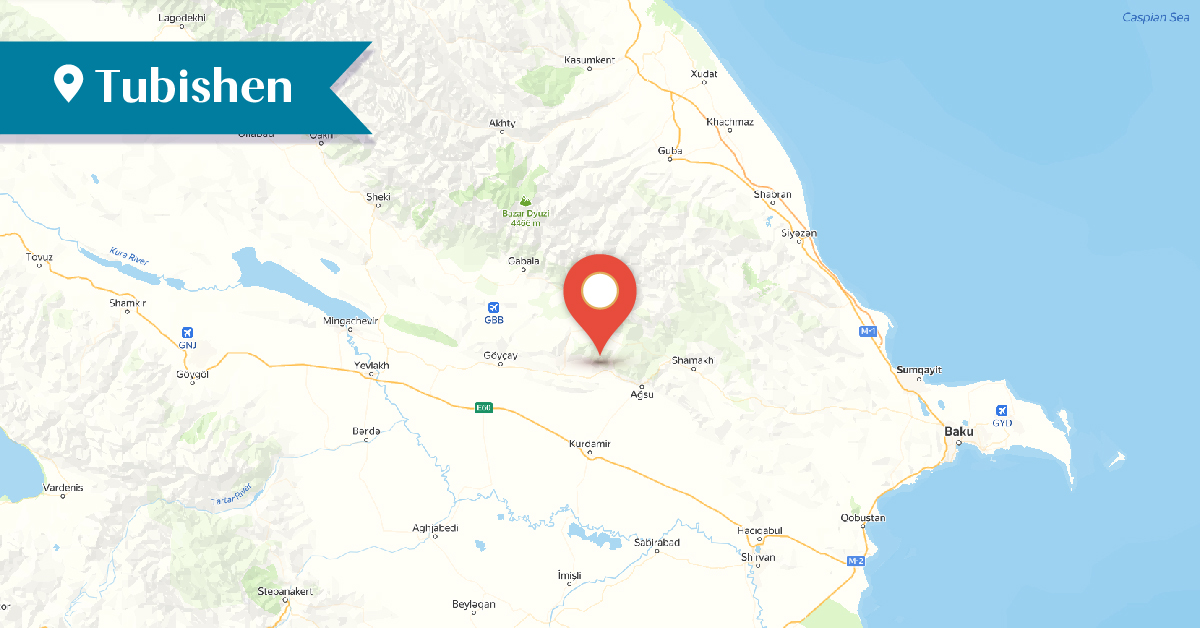2025
2025
2025-04-21

Tubishen village in the Ismayilli district was located about 9.6 km southeast of the district center. It was also known as Topishen. The ancestors of the village's inhabitants had migrated from the Dizak, Varanda, and Jraberd provinces of Artsakh. Tubishen is mentioned in a Georgian travel document from 1806: “They are going to the Armenian village of Tobushen and staying there overnight.”
In 1861, there were 57 Armenian households in Tubishen. During the visit of Bishop Makar Bartaryants in 1886, the village had 85 Armenian households with 675 residents. In 1914, Tubishen was entirely inhabited by Armenians, with a population of 1,016.
In June 1918, the village was attacked by Turkish troops and local Tatars. After the establishment of Soviet rule in Azerbaijan, the surviving inhabitants of Tubishen returned and resettled in their native village. By 1924, Tubishen had 70 Armenian households with 280 residents.
However, in the 1950s, an Azerbaijani-populated neighborhood was built adjacent to Tubishen, after which the Armenian residents gradually began to leave the village. By 1985, only 8 Armenian households remained, who were forcibly displaced at the end of 1988.
When monument specialist Samvel Karapetyan visited there in 1985, the Church of the Holy Mother of God built in 1851, was still standing. The following inscription on the lintel above the entrance was preserved:
Church of the Holy Mother of God
Built in honor of the Holy Cross of Jesus Christ
by the common people of the village of Tobi
In the Year of the Lord 1851.
In 1889, the residents of Tubishen and the neighboring Armenian villages of Gandzak established a school in Gandzak for their children.
As of 1985, remnants of the Old Tubishen village site, where the ancestors of the villagers had lived until the early 19th century, were still preserved near the village.
Today, the village is known as Tubikend (Azerbaijani: Tubukənd) and has Azerbaijani population.
Bibliography
Barkhutaryants M., Land of Aghvank and its Neighbors: Artsakh, Yerevan, 1999.
Karapetyan S., The Armenian Lapidary Inscriptions of Aghvank Proper, Yerevan, 1997.
Karapetyan, S., Aghvank Proper, Part 1, Yerevan, 2024, pp. 137-143.
Chobanyan P., Georgian Travelogues and Their Information about Armenians, Yerevan, 1981, p. 151.